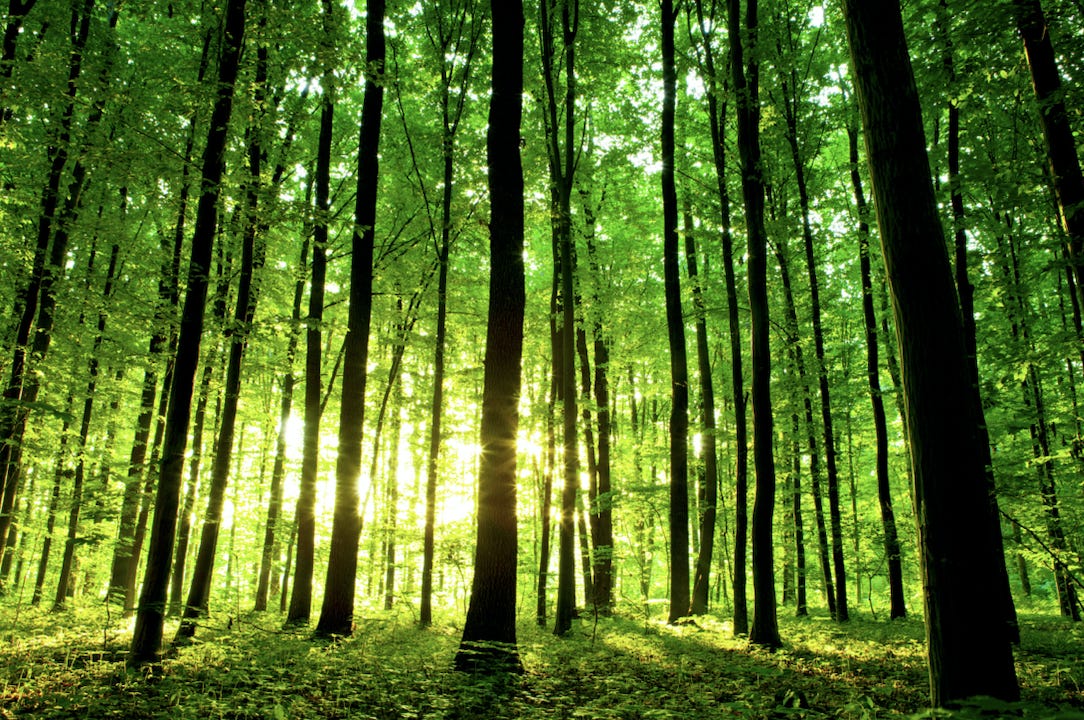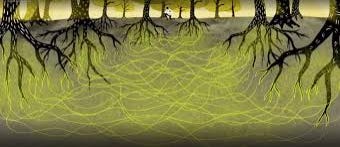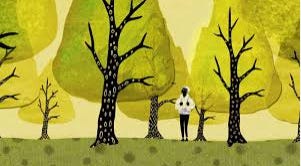If You Want To Be A Better Facilitator, Listen To Trees

Swiss poet, writer, and painter Herman Hesse saw trees as the wisest of teachers.
Hesse along with many other poets, writers, and artists have long admired and revered trees. Through the ages, trees have taught us about relationships, resiliency, and the interconnectedness of life.
I never appreciated how much trees have to teach us until I picked up my watercolor paintbrush three years ago. I stumbled upon an online painting course called Paint trees in watercolor, easily. As I paid closer attention to the texture of the trunks, the shapes, and shades of leaves I began to see the remarkable life of trees in a whole new light.
As a facilitator, I was curious to know what trees could teach us about the nature of group work. How would we work with groups differently if we really listened to trees?
I discovered that trees teach us to listen for hidden signals. Forests can give us a masterclass in understanding complex connections and building resiliency. Ecosystems can give us important clues on how to facilitate a group’s capacity to self-organize. I learned that through understanding the complexities of forests, I could learn to facilitate deeper group interaction.
What we know about the secret life of trees

A few years ago I started to read Coin Tudge’s book “The Secret Life of Trees”. I was astonished to learn how little I knew about the complexity of how trees live. I became aware of a whole community of scientists and ecologists who have revealed in new ways what indigenous cultures already knew. I realized that I was a total late-comer to this party.
Professor of forest ecology Suzanne Simard, ecologist Thomas Crowther, The Hidden Life of Trees author, Peter Wohlleben, biologist, and fungal expert Merlin Sheldrake have all revolutionized how we now understand the social life of trees. The tangled web of connections that lay beneath the forest floor. Or as some call it, the Wood Wide Web. I began to see how the inner-workings of the natural world could shed important light on how to work effectively with groups.
This is what I learned.
Listen for the hidden signals

Trees have sophisticated ways of talking to each other. They share news and send each other signals about imminent threats. Neighbors share updates on an impending insect attack. You can bet your last pine cone that they have a lot to say about us humans. These signals are impossible for a human to see or hear. Likewise in groups, there are many signals that are not easily seen or heard. One of my facilitation mentors once told me that what is unsaid in a group is as important as what is said. Silence can be confused with acquiescence. Talking can be mistaken for engagement. That's why the most skilled facilitators I know develop their ability to attune themselves to these “hidden” signals. As a group leader, if you are not tuning into these signals you can miss important dynamics that impact the group experience.
Foster shared connections and resources

Peter Wohlleben, the author of The Hidden Life of Trees, explains how trees depend on a complicated web of relationships, alliances, and kinship networks. They operate less like individuals and more as social beings. Through back and forth conversation they increase the resiliency of the whole community. They are able to achieve more together than on their own. Groups are also living systems. They become entities of their own. That’s what makes learning in a group so powerful. As a group leader, you can facilitate the group’s connections by helping these systems to flourish. As with our tree friends, fostering these connections will help to build the group’s resiliency, and its potential to learn and support one another.
Build on innate capacities to self-organize

Trees have a remarkable capacity to ensure that the needs of the ecosystem are met. They share water and nutrients through underground fungal networks. Old beech tree friends in Europe ensure that they all have the sunlight they need. Older trees share knowledge and sugar with young saplings. They can form alliances with trees of other species. With help from fungi, trees barter and trade food, carbon, and nutrients. Through their ability to self organize, trees have a coordinated system for ensuring a healthy flourishing forest. Groups also have an innate ability to self organize. The best facilitators I know don’t try to control their groups. They facilitate a group’s ability to self-organize. They foster the group’s shared responsibility for meeting the needs of the whole. As you uncover the connections and resources that already exist in the group, you strengthen the group’s capacity to self-organize and thrive.
Trees are the wisest of teachers
The social life of trees can teach us many things about how to foster deeper group interaction. Like a seasoned forest guide, we can learn to listen for hidden signals. We can fine-tune our understanding of a group’s complex connections and facilitate a group’s capacity to self-organize. Hesse wrote, “Trees are sanctuaries. Whoever knows how to speak to them, whoever knows how to listen to them, can learn the truth.” There is still much we have to learn about forests that can teach us about groups if we know how to listen.
What lessons have you learned from nature that you apply to your work in groups? I’d love to hear from you. Send me an email at gwyn@gwynwansbrough.com. Join me on my quest to learn more about how facilitation skills can transform your sessions, online and in person. Sign up for my monthly newsletter here:
Gwyn Wansbrough is a Creative Facilitator based in Barcelona, Spain. She works with people and organizations globally to create dynamic and empowering learning experiences. She writes about facilitation, creativity, and learning. Visit www.gwynwansbrough.com.
Special thanks to Michaele Robertson, Barry Wansbrough, and Jen Vermet for their feedback on this article.



